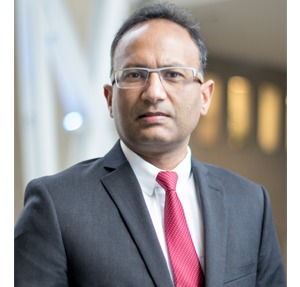
The Calgary Stroke Program has been focused on increasing efficiency of acute stroke treatment for over a decade. They implemented their learnings and strategies across Canada and other centres across the world during the running of the ESCAPE trial—the trial has by far the fastest workflow among all the recently completed trials; start of imaging to groin puncture of 51 minutes; start of imaging to first reperfusion of 84 minutes (median times). The team described their workflow as they followed one patient through the system. This was recently published in the American Journal of Neuroradiology.
Now, Mayank Goyal (University of Calgary, Canada), who has been at the forefront of pushing for speed and efficiency in acute stroke, tells NeuroNews about what factors contributed to the success of the stroke workflow in the Calgary Stroke Program.
I attribute the success of the stroke workflow at the Calgary Stroke Program primarily to the following factors:
- Pre-notification: for over a decade, the Calgary Stroke Program set up a system of pre-notification by the paramedics. The message comes through the paging system and gives key simple information: age, last seen normal time, key deficit and expected time of arrival to the emergency room (ER). As a consequence the stroke team is able to meet the patient at the entrance of the ER.
- Simple, decision-oriented imaging: Multiphase computed tomography angiography (CTA) based collateral imaging came out of the Calgary Stroke Program and was implemented in the ESCAPE trial. I firmly believe that at two million neurons per minute, all that I am willing to spend on all the imaging, post processing and decision-making is five minutes or 10 million neurons. As such, we do not do any magnetic resonance (MR) imaging or even CT perfusion imaging. In fact, we have found that decision-making based on head CT (ASPECTS score, which, by the way, also came out of the Calgary Stroke Program) and multiphase CTA is better than using CT perfusion for decision-making and of course takes significantly less time.
- Parallel processing: The Calgary Stroke Program believes in and practises a team approach where different parts of the team have their clear tasks and responsibilities. Each member takes care of what their role is without waiting for another part of the team to finish their part. Typically, all members of the team converge at the CT scanner, imaging is viewed in real time, a decision is made and then the team splits up based on what each person needs to do.
- Pre-organisation of the angio suite: I call this BRISK (Brisk Recanalisation Ischaemic Stroke Kit). I set this up in Calgary many years ago and it was implemented across most ESCAPE sites. There is already a stroke tray ready to go with everything available so that even if a stroke patient came at 2 o’clock in the morning, there is hardly any time spent on opening packets and getting organised. I feel that this saves over 30 minutes for cases done after working hours.
Overall, it is critical, especially in light of the recent evidence for the efficacy of endovascular thrombectomy and ‘time is brain’ that we focus on opening the vessel fast and safe.













